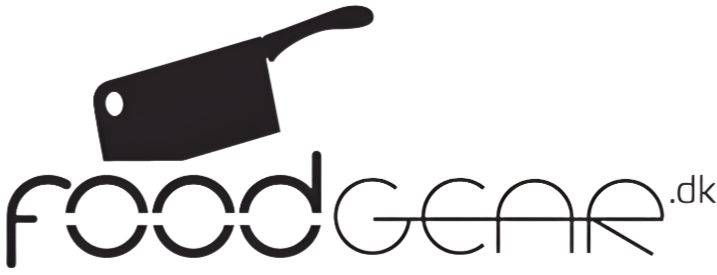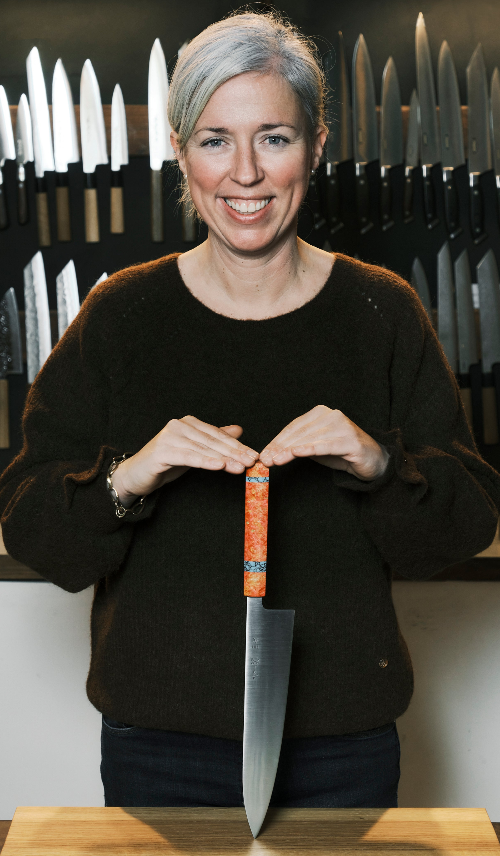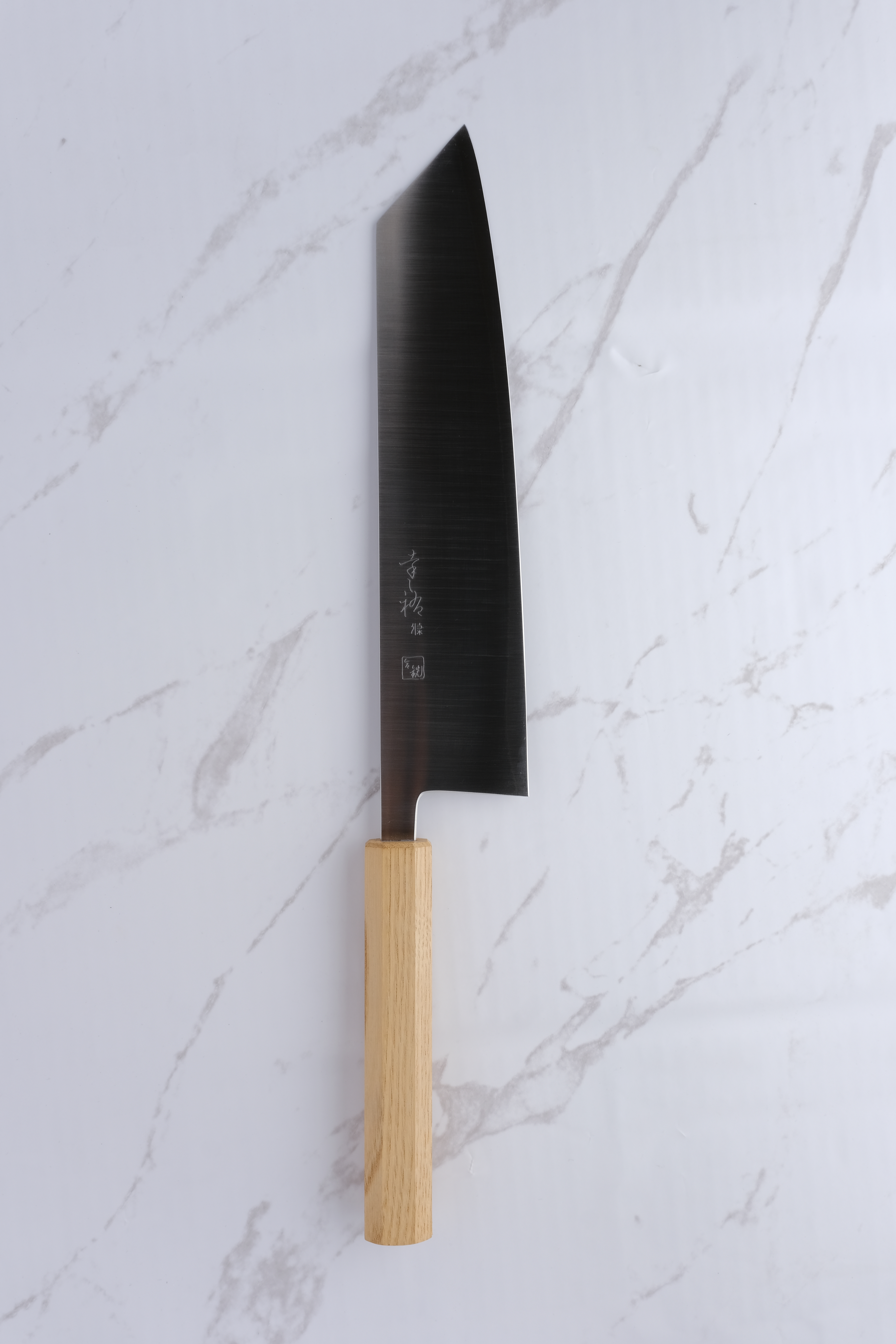
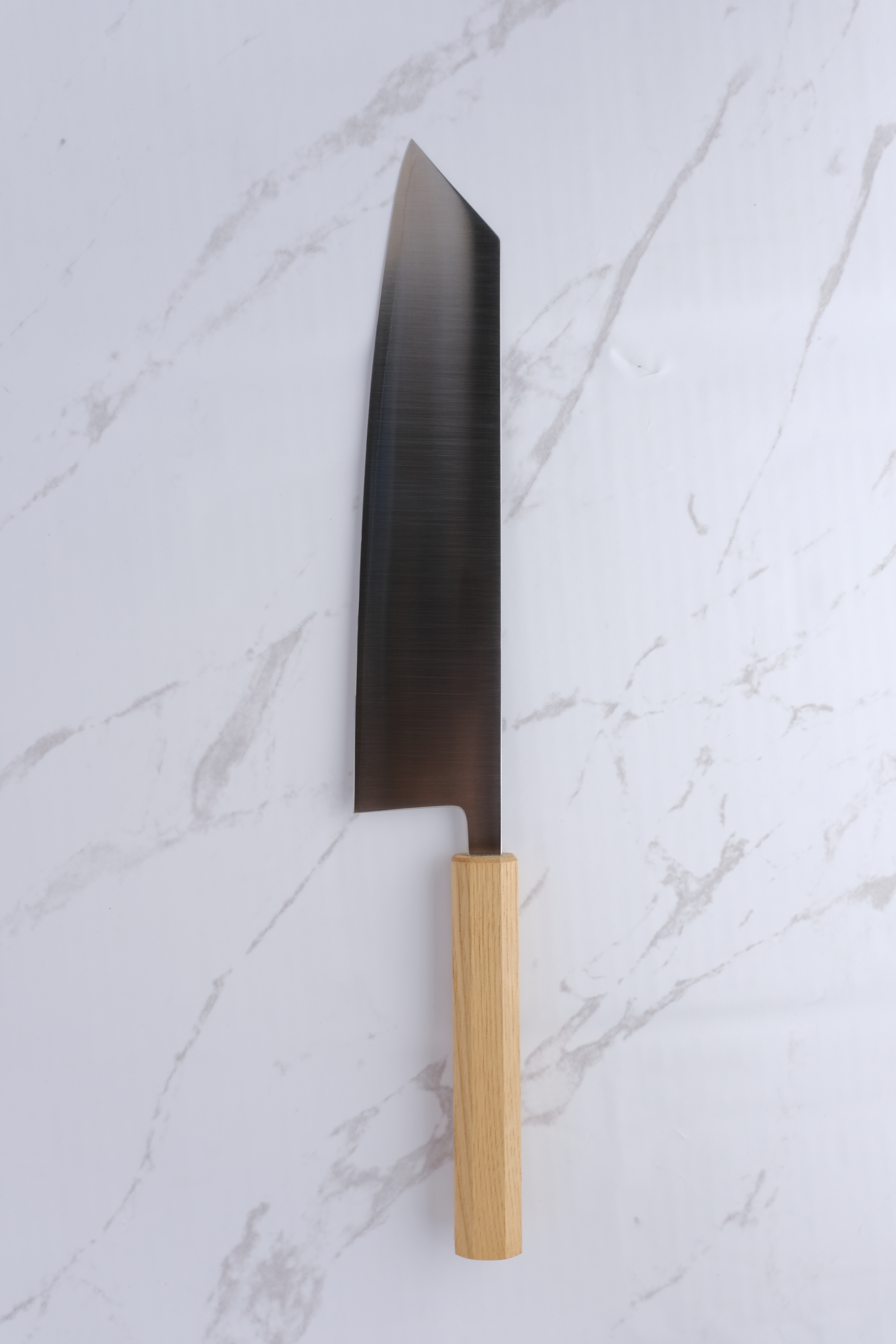
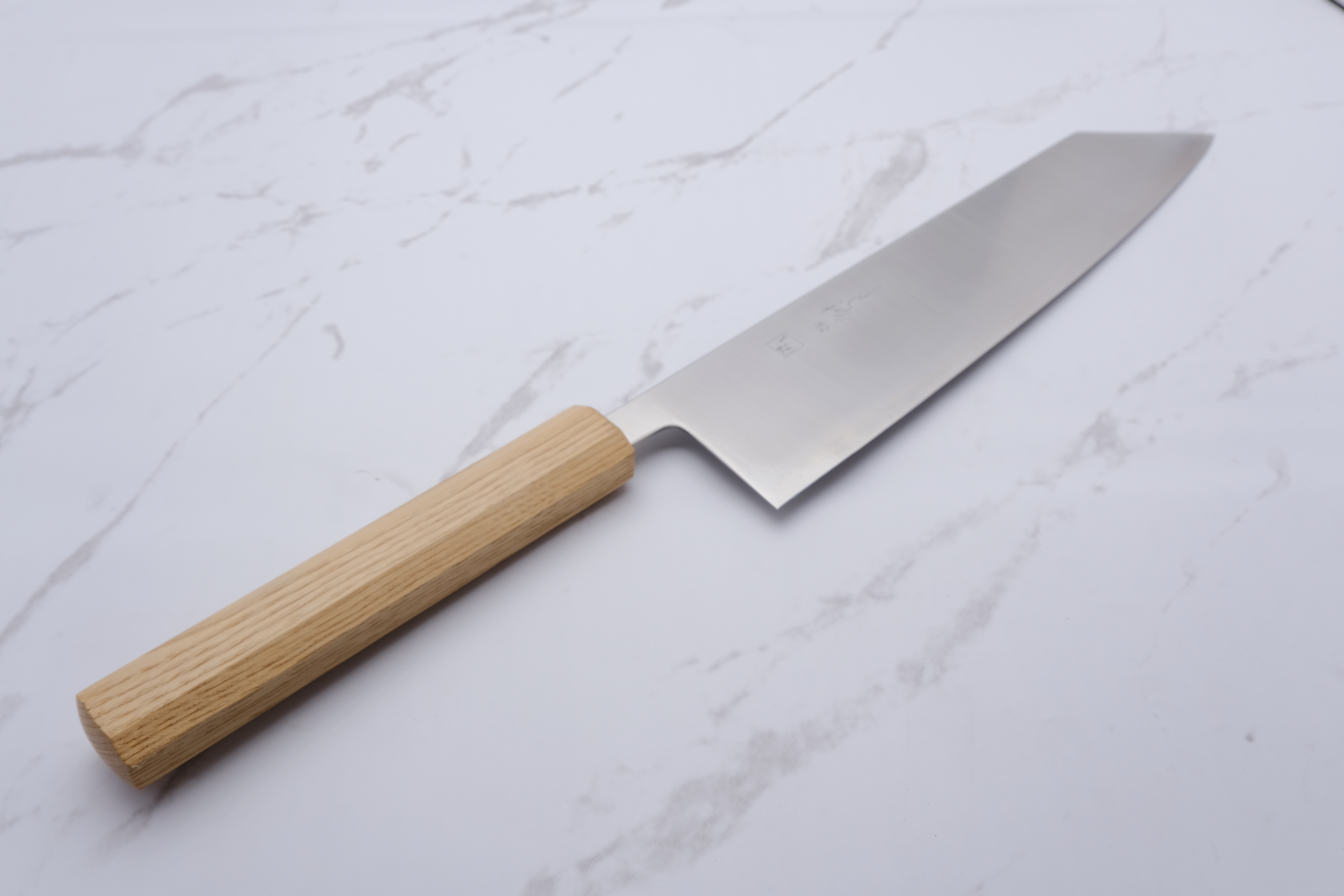
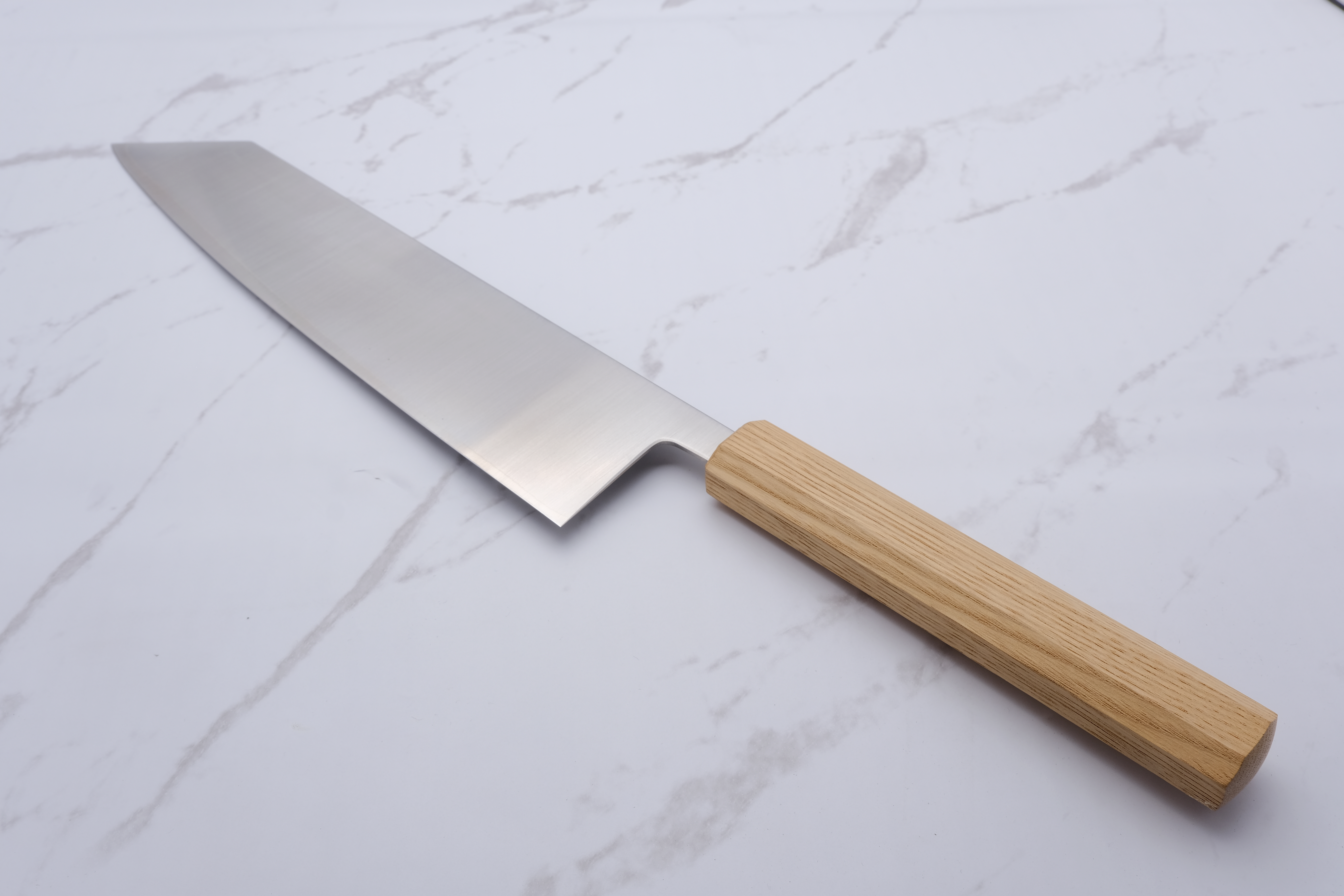
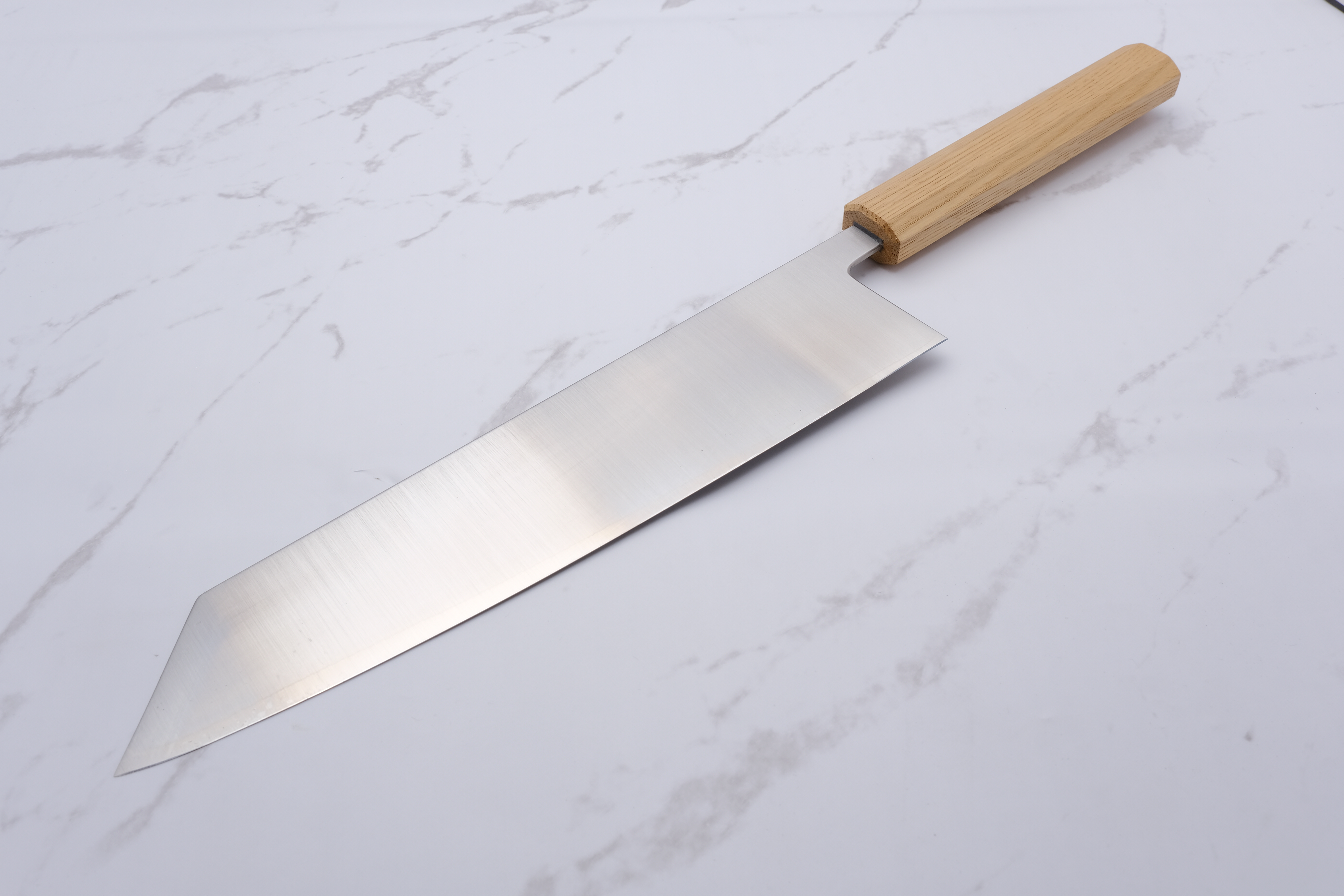
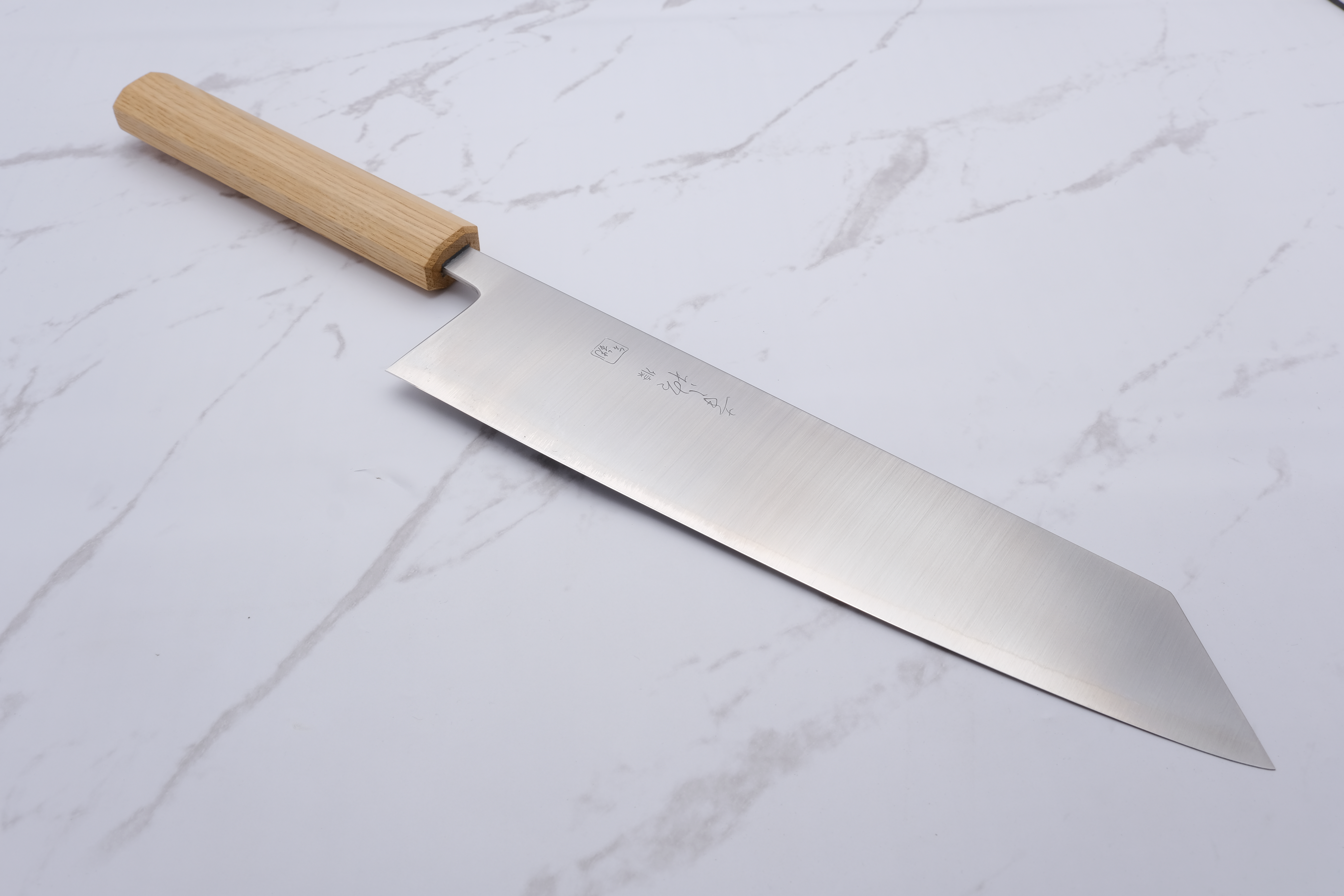
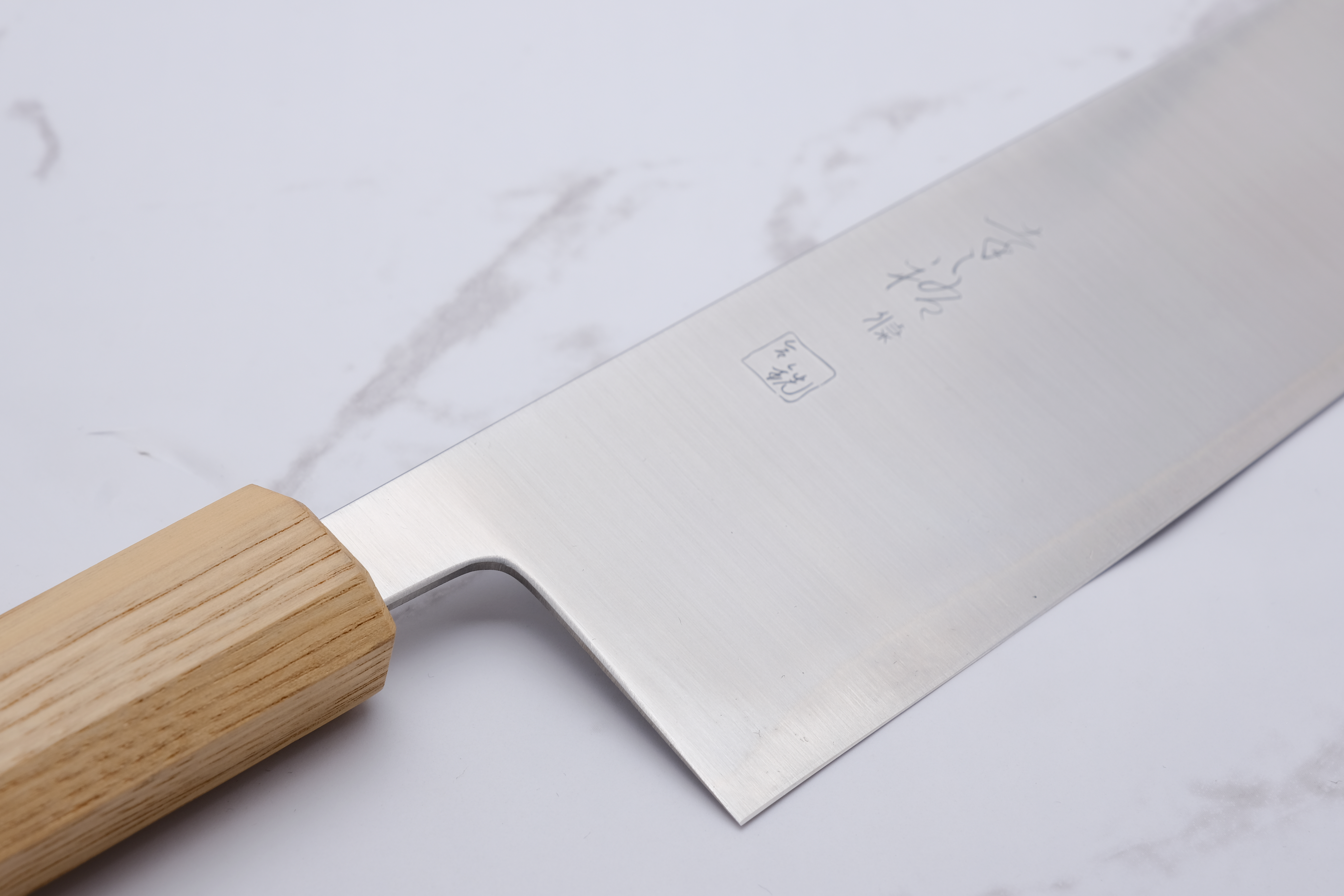
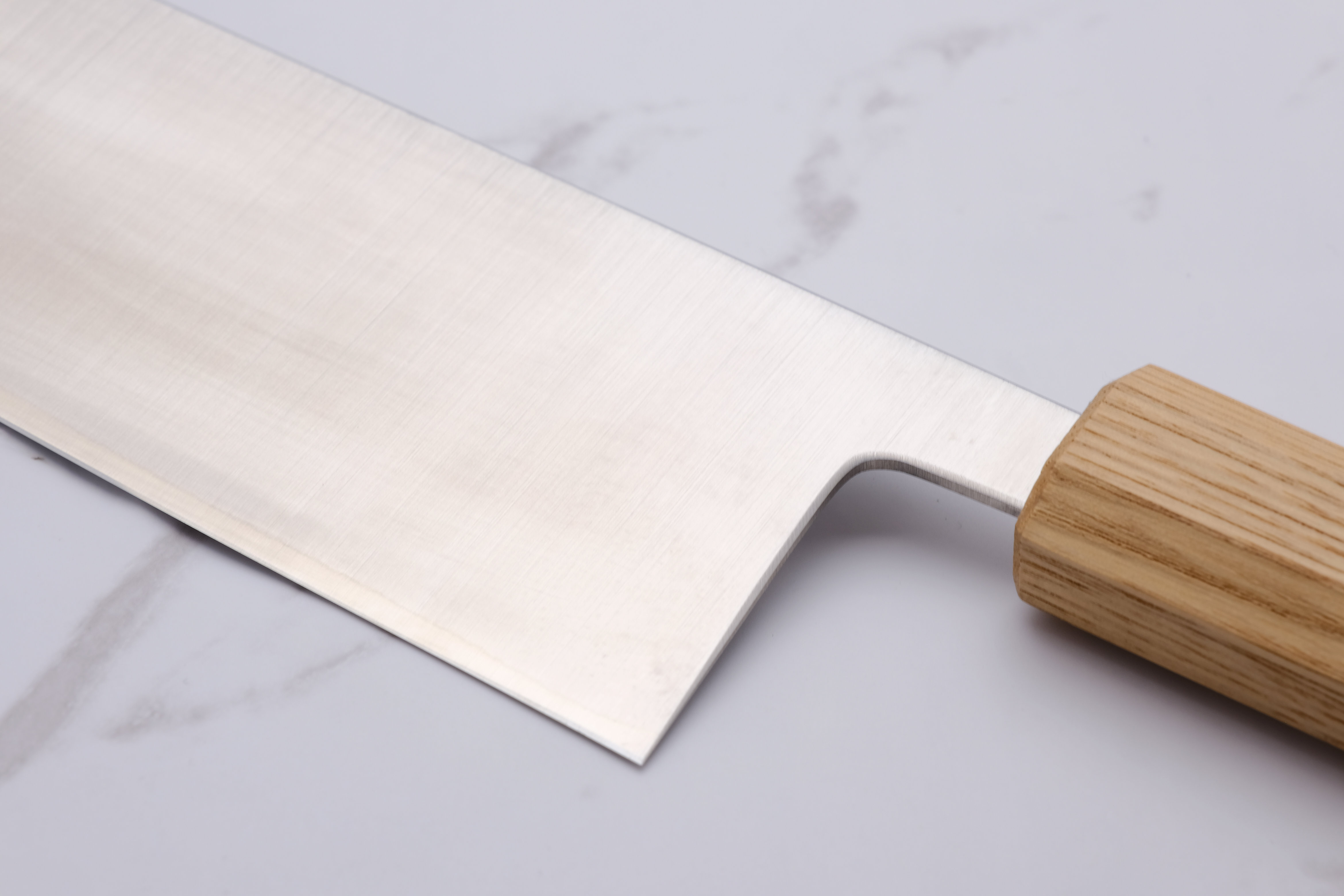

Konosuke GS+ 240 mm K-Tip Gyuto - Khii Chestnut
Tax included.
Pickup available at Foodgear Shop Torvehallerne
Usually ready in 2 hours

Konosuke GS+ 240 mm K-Tip Gyuto - Khii Chestnut
Foodgear Shop Torvehallerne
Rømersgade 18
Torvehallerne Kbh - Hal 1
1362 København
Denmark
If a knife were a racehorse, it would be a Konosuke GS+
The cutting experience of this knife is poor in words, so it is a knife that must be tested to that extent. If you have the opportunity to drop by our store in Torvehallerne in Copenhagen, we will therefore be ready with carrots and a cutting board, so you will be able to experience for yourself why this knife is so much better than most others out there.
One aspect of knife forging that Konosuke masters particularly well is the ability to make the blades wedge-shaped all the way from the heel to the tip. This makes the blade very thin, which combined with the sharpness makes the knife slide easily when cutting.
Technically, the blade consists of three layers of steel - two soft layers around a core of the core. The core is a fantastic steel, as it combines carbon steel's ability to get a particularly fine edge, but at the same time is relatively rust-resistant. The reason for this is that the core is a "pure" stainless alloy, simply put. The main constituents of the alloy are iron and carbon, but a little more chromium is also added than there is in e.g. aogami and this is what gives the resistance to rust. When we write that it is a pure alloy, it is because, like other stainless knives, it does not contain a lot of other alloy elements such as nickel, and that is what makes the core able to have such a fine edge.
A saya in magnolia wood is included for storing the knife.
| Brand/series | Konosuke GS+ |
| Type | Chef's knife |
| 3 layers semi-stainless |
|
| 50/50 | |
| Octagonal Chestnut |
|
| No! Semi-rustfi | |
| 61-62 |
|
|
Length: 240mm. Height: 55mm. Weight: 168g. Width out of the handle: 2mm. |
Foodgear always advises against cutting all kinds of bones and frozen goods. Knives must not be washed in a dishwasher, as this removes sharpness and provokes rust - even in stainless alloys!
Choose options









